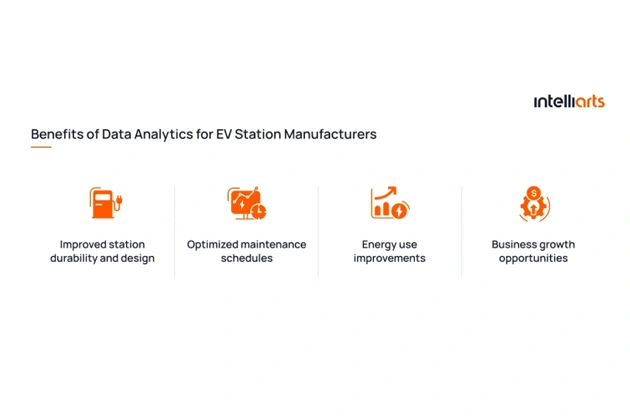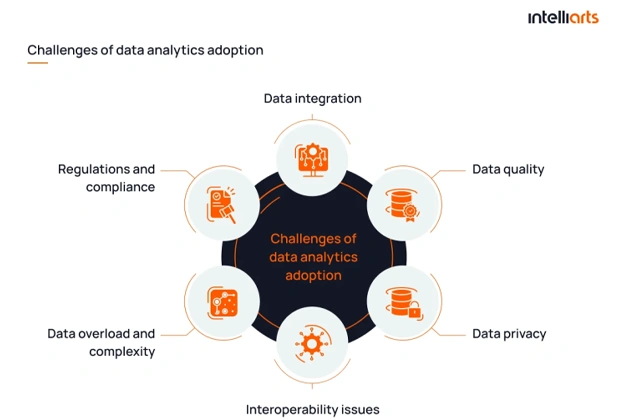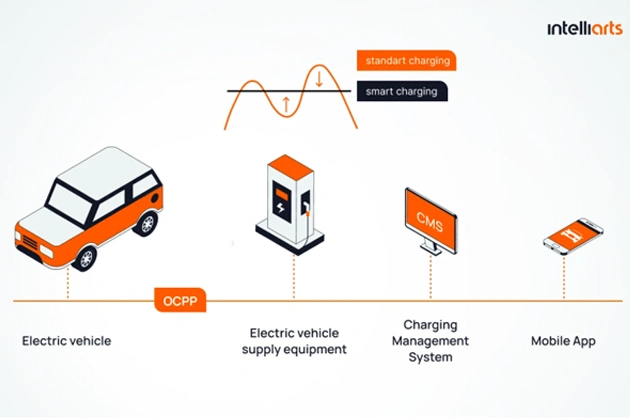Find out why predictive maintenance data analytics is so important in building a Machine Learning-powered solution for EV charging stations.
Electric vehicle (EV) charging data analytics is transforming the way EV businesses approach the management and performance of charging infrastructure. By improving operational efficiency with the help of electric vehicle software development services, EV data analytics unlocks actionable insights that drive innovation and growth.
This article delves into highlighting key metrics to monitor and implementation benefits and challenges.
How data analytics benefits EV station manufacturers
For EV station manufacturers, EV charging data analytics offers a transformative strategy to enhance their products and operations. Here are some of the key advantages:
- Improved station durability and design: Analytics provides valuable insights into recurring failures and user behaviors
- Optimized maintenance schedules: Manufacturers can replace costly reactive maintenance with predictive maintenance that minimizes downtime and extends equipment life
- Energy use improvements: Advanced analytics monitors and optimizes power usage patterns, reducing waste and cutting operational costs
- Business growth opportunities: Manufacturers gain strategic insights into market trends and station usage, allowing them to innovate faster
By harnessing the power of data, EV station manufacturers can position themselves as industry leaders, capable of addressing today’s challenges and anticipating future needs.
Challenges of data analytics adoption in EV
Needless to say that adoption of data analytics in EV comes with a range of challenges, including:
- Data integration: EV operators often rely on data from diverse sources, including vehicle sensors, charging stations, energy grids, etc. Integrating this data into a unified system can be complex, especially when different data formats, protocols, and standards are involved.
- Data quality: Ensuring data quality and consistency is crucial for accurate analytics. Poor data quality can lead to inaccurate insights and suboptimal decision-making.
- Data overload and complexity: Without proper tools and frameworks in place, operators may struggle to extract actionable insights from data. Advanced analytics platforms are essential to filter out noise, focus on key metrics, and present data in an understandable way for decision-makers.
- Data privacy: Since the data generated by EVs is often sensitive and personal, it’s important to comply with regulations such as the GDPR or other local data protection laws. The risk of data breaches, cyberattacks, or unauthorized access can undermine consumer trust and damage a company’s reputation.
- Regulations and compliance: The EV sector is subject to various regulations that may affect how data is collected, analyzed, and used. Also, these regulations vary by country or region and may change over time, adding further complexity to data analytics implementation.
- Interoperability issues: Since it’s possible that different vendors develop different parts of the system, such as charging stations, energy management platforms, etc., operators have to make sure these are compatible with each other.
Top metrics to track for maximizing EV station efficiency
Effective optimization of EV charging stations requires careful monitoring and analysis of key performance metrics. Below are key metrics that electric vehicle data analytics can help businesses to keep track of:
- Charging station utilization rate to monitor the frequency of station use, understand demand patterns, and identify the locations that are underused — making analyzing data of EV usage crucial for operational insights
- Charging session duration to measure how long vehicles are connected to charging stations in order to optimize availability and reduce wait times
- Power consumption to track energy usage and detect inefficiencies or irregularities in station performance to grant more sustainable energy use
- Failure and maintenance logs to capture breakdowns, maintenance activities, and system reboots
- Availability status to provide real-time updates on whether a station is occupied or free to streamline user experience
- Anomalous behaviors to detect unexpectedly long charging sessions, unusual power levels, etc. to improve station efficiency
By identifying trends and defects in EV charging infrastructure, businesses can make more informed decisions and, hence, enhance operational efficiency and maintain a competitive edge in the EV charging data research firms.
Keeping EV uptime through predictive maintenance
Delivering an exceptional user experience requires keeping EV stations in top condition and reducing downtime. However, EV chargers are at risk of breaking down at any moment, just like any other devices, resulting in inconvenience for the end-users.
Modern EV charging stations operate through an open standard, and they are able to communicate with the network, providing information on charging sessions and the overall condition of each station. The standard is called the OCPP protocol – an application protocol for communication between an EV charging station and the central management system or a charging station network. The same principle as with cell phones and cell phone networks. Charging stations owners can change OCPP-based networks, but the protocol will always remain the same.
By applying machine learning algorithms, it becomes possible to analyze charging station data, detect anomalies, and predict potential failures. This allows operators to address issues before they escalate into significant problems, thus minimizing downtime and preventing costly damages. For example, supervised learning algorithms can be used to predict failures based on labeled datasets, while unsupervised algorithms help identify hidden patterns and anomalies in unlabeled data.
Data analytics is at the core of predictive maintenance, enabling EV station operators to anticipate issues and proactively resolve them. Insights derived from charging station data not only enhance EV charger efficiency but also ensure a seamless experience for end-users.
Location optimization of EV chargers
Another use case is location-based EV charging optimization with data analytics. This is important for ensuring widespread accessibility of EV chargers and maximizing their efficiency.
By leveraging data-driven insights, operators can make informed decisions about where to install charging infrastructure. For instance, analysis of traffic flow patterns can help to identify areas where chargers are most likely to be used. Businesses can also prioritize locations based on user demand and charging habits, using location analytics to identify preferred charging times and durations. Demographic and geographic data can highlight underserved regions while environmental data such as proximity to renewable energy sources can support both operational efficiency and sustainability goals.
Using location intelligence for EV charging, operators can build an infrastructure that aligns with market demands while fostering the growth of the EV ecosystem.
Wrap up
Data analytics is revolutionizing the EV charging ecosystem, businesses to optimize EV charging locations performance and enhance reliability. From tracking key metrics to implementing predictive maintenance, data analytics for electric vehicles empowers businesses to stay competitive. As demonstrated, data-driven EV charging optimization is key to improving operational efficiency, as well as helping to minimize downtime.
Looking ahead, the role of electric vehicles (EVs) and data analytics will only expand as the industry grows, driving further advancements in charging infrastructure.













